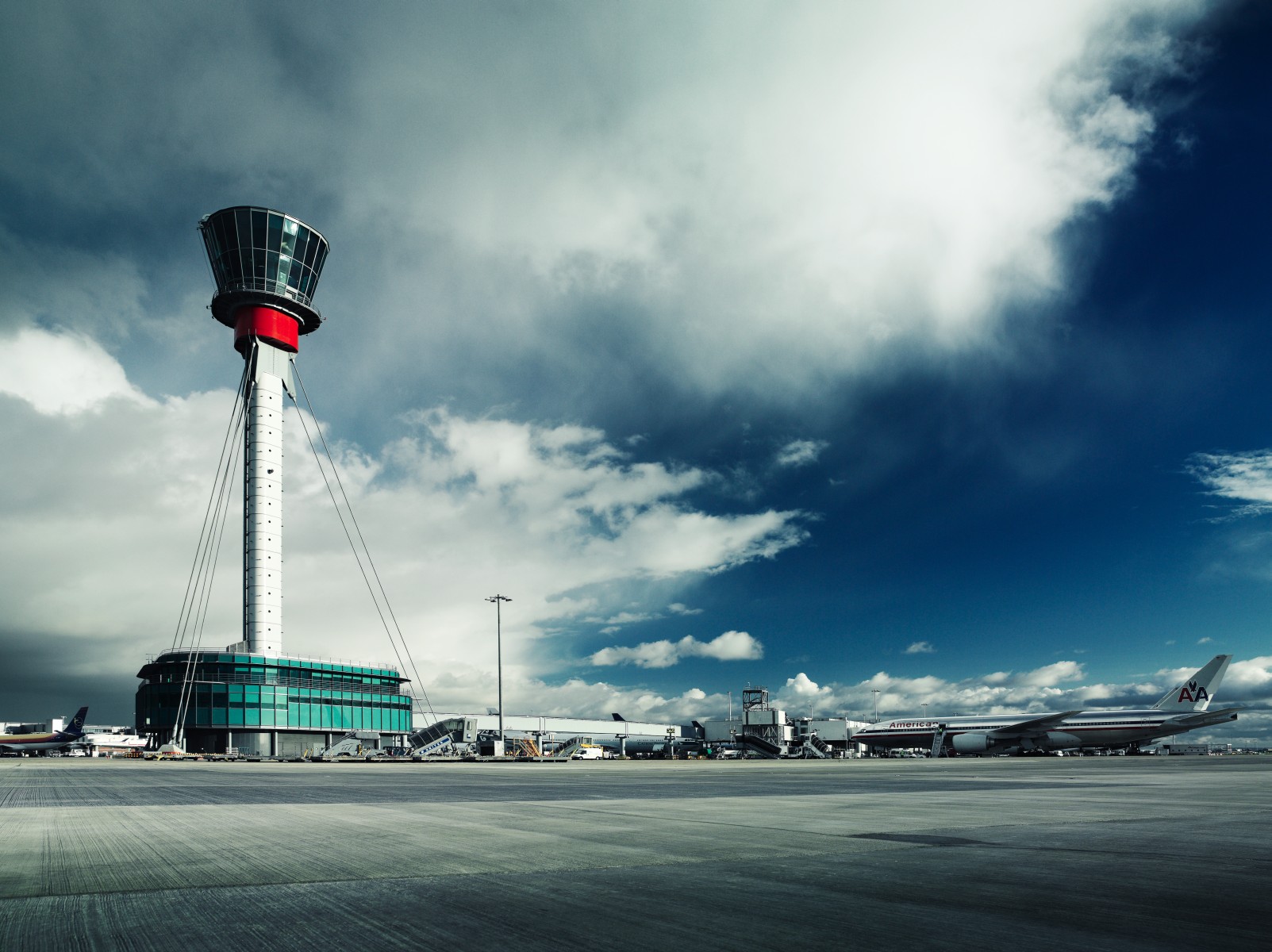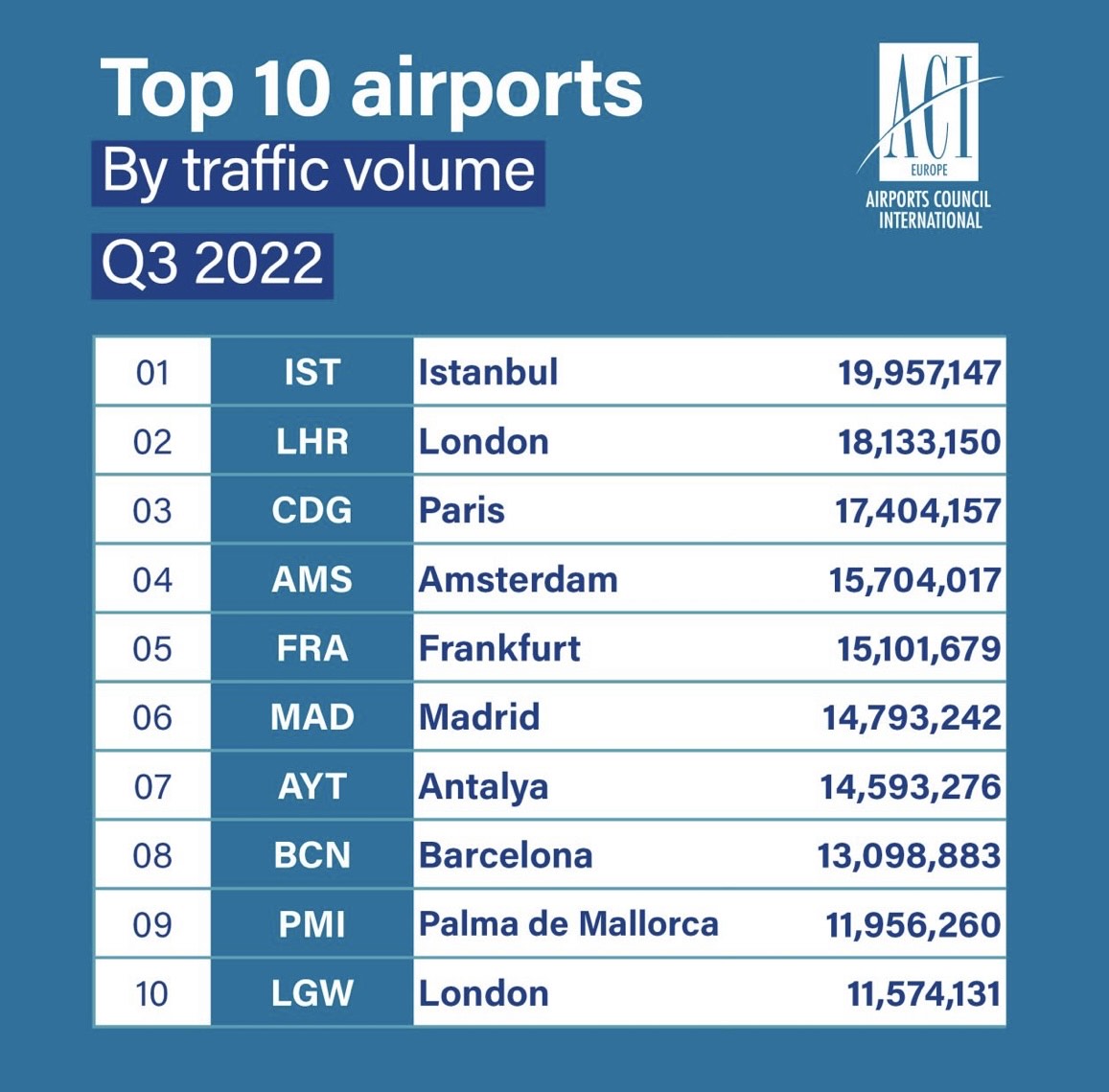EUROPE. Airports International Council (ACI) Europe’s latest airport traffic report indicates a continuing recovery of the air passenger market in the third quarter, with levels at 88% of traffic recorded in Q3 of pre-pandemic 2019.
The gain against Q3 2021 stood at +61%, with international passenger traffic (+84%) across European airports driving the surge. Domestic passenger traffic (+14%) expanded a at slower but still dynamic pace.
The trade body attributed the encouraging result to largely unrestricted cross border travel, which led to a boom in leisure and VFR travel over the peak summer months.
The Q3 result marks a sustained upward trajectory towards pre-pandemic traffic levels from the first two quarters of 2022, which compared to the corresponding quarters of 2019 produced results of -39% (Q1) and -17% (Q2).

European market variations
The EU+ market (EU, EEA, Switzerland and UK) continued to drive the recovery, with passenger traffic at airports in the bloc increasing by +74% in Q3 compared to the same period last year. The best performances came from airports in the UK (+202%), Finland (+194%) and Ireland (+188%). ACI Europe noted this largely reflects the fact that Governments in these countries had been slower to ease travel restrictions last year.
When compared to pre-pandemic (2019) levels, airports in the EU+ market were at -13%, with significant variations in recovery performance. Airports in Greece (+4.8%), Luxembourg (+3.3%) and Iceland (+1%) exceeded their pre-pandemic passenger volumes.
Airports in prominent tourism markets including Portugal (-1.8%), Spain (-7.8%), Croatia (-9.3%) and Italy (-11.4%) generally outperformed the EU+ average, along with those in Romania (-4.8%), Lithuania (-7.6%), Ireland (-10%) and Poland (-11.2%).
Airports in the largest EU+ aviation markets recovered at a slower pace, ACI Europe revealed. France (-14.1%) posted the best results followed by the UK (-18.1%) and Germany (-25.9%). The exposure of these markets to intercontinental traffic (especially to Asia) as well as airport capacity restrictions at selected hubs in the UK and Germany acted as recovery-limiting factors, the trade body observed.

Meanwhile, airports in Finland (-35.4%), Czech Republic (-30.9%), Latvia (-28.7%) and Bulgaria (-27.7%) lagged significantly behind. ACI Europe attributed this in large part to the impact of the war in Ukraine and related sanctions against Russia and Belarus.
At airports in the rest of Europe outside the EU+ market, passenger traffic increased by +18% in Q3 when compared to the same period last year.
The best performance came from airports in Israel (+164.4%), while the loss of all commercial air traffic for Ukrainian airports and declining passenger volumes in Belarus (-15.9%) and Russia (-3.9%) dragged down the average for the non-EU+ bloc.
When compared to pre-pandemic (Q3 2019) levels, passenger traffic in the rest of Europe stood at -9%.
Airports in Albania (+60%), Kosovo (+26.3%), Bosnia-Herzegovina (+23%), Northern Macedonia (+3.3%) and Montenegro (+0.4%) exceeded their pre-pandemic volumes, while those in the major market of Turkey (-6.6%) as well as in Serbia (-4.4%) and Georgia (-2.9%) came close to a full recovery.
Airports in Belarus (-60.1%) registered steep declines, with those in Russia (+3.4%) still managing to remain above their pre-pandemic volumes as passenger traffic shifted to domestic and non-EU+ routes.
Major European airports in Q3
Passenger traffic at the Majors (top 5 European airports) grew by +79.4% in Q3 compared to the same period last year. However, the level remained -16.9% below pre-pandemic (Q3 2019) levels, mainly due to continued travel restrictions in parts of Asia.
Istanbul was the busiest European airport and the only major hub in the continent whose passenger volumes exceeded pre-pandemic levels in Q3 at +3%. Its passenger traffic increased by nearly +56.1% when compared to Q3 2021.
London Heathrow was next busiest followed by Paris-CDG. Volumes increased by +187.1% and +83% respectively for the British and French hubs compared to Q3 last year. The results are -18.4% and -19.9% respectively below pre-pandemic levels.

Capacity restrictions limited passenger traffic growth at Amsterdam-Schiphol (+54.1%) and Frankfurt (+62.3%) compared to Q3 last year. The Dutch and German hubs came in fourth and fifth positions, with volumes for both remaining below -20% when compared to pre-pandemic levels.
The performance of selected other large airports in Q3 reflected a summer recovery still mainly driven by intra-European and transatlantic routes, and dominated by leisure demand, according to ACI Europe.
Paris-Orly (+3.7%) exceeded its pre-pandemic Q3 passenger volumes; Palma de Mallorca (-2.4%) and Athens (-5%), came closest to a full recovery of their pre-pandemic passenger levels, along with Lisbon (-5.2%), Antalya (-8.2%) and London Stansted (-9.6%); and Madrid only handled -2% less passengers than Frankfurt and was the sixth busiest European airport in Q3 (-14.5% compared to Q3 2019).
Regional and smaller European airports in Q3
While regional and smaller airports (+50.3%) grew at a slower pace than the Majors in Q3 when compared to the same period last year, they had almost recovered their pre-pandemic (Q3 2019) volumes (-3.7%).
ACI Europe noted that this reflects leisure and intra-European driven recovery dynamics along with ultra-low cost carriers’ surge in capacity.
There were however significant variations in performance among regional airports, with those serving popular tourist destinations and/or relying on low cost carriers seeing passenger volumes exceeding Q3 pre-pandemic levels.
These include Perugia (+125.4%), Zadar (+58%), Santorini (+37%), Funchal (+30.4%), Turin (+26.3%), Kerkyra (+19.9%), Figari (+19.8%), Chania (+18.9%), Olbia (+11.3%) Naples (+10.3%), Menorca (+9.3%), Charleroi (+9.3%), Paphos (+8.2%), Palermo (+4.3%) and Bologna (+3.3%).
European air traffic in September
In September, passenger traffic across the European airport network stood at -12% when compared to the corresponding month of 2019.
Airports in the EU+ markets kept improving and posted their best monthly recovery performance at -12% (vs. -14% in August). Airports in the rest of Europe also made further gains at -15% (vs. -16% in August).














